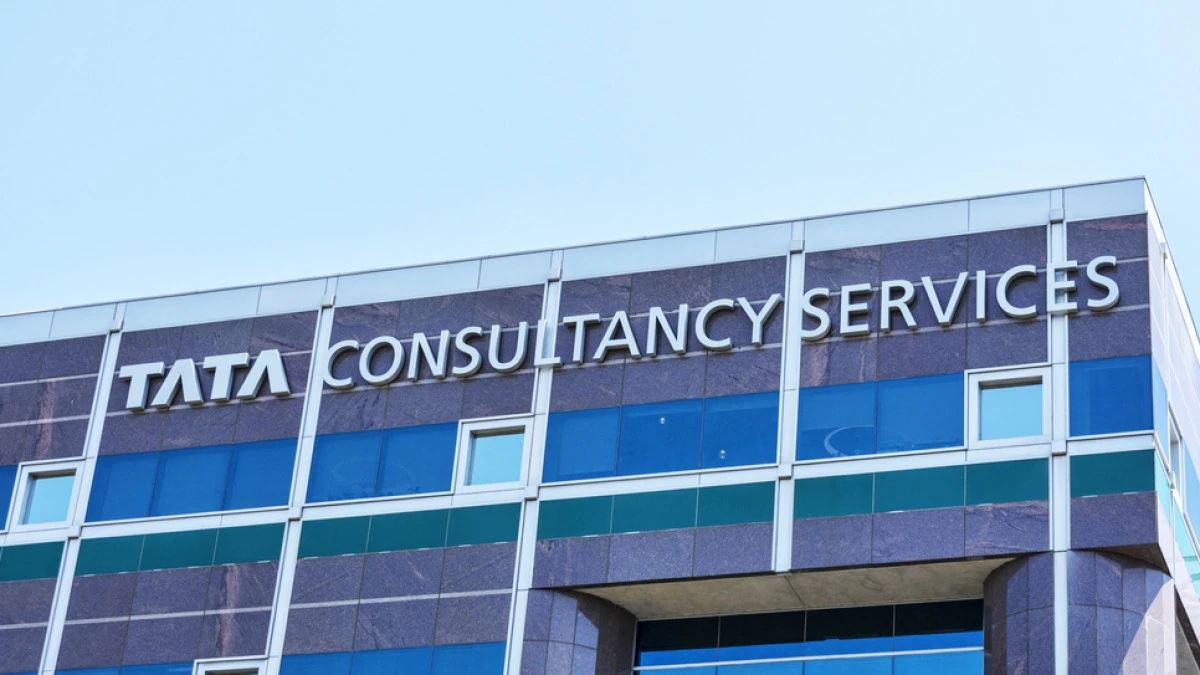The relentless march of Artificial Intelligence is poised to significantly transform job markets across India and Asia. Initial anxieties surrounding widespread job displacement, particularly in white-collar sectors, have begun to yield to a more nuanced understanding: AI acts not as an outright “killer” of jobs, but as a powerful redefiner of roles. While AI automates repetitive tasks, leading to displacement and redefinition, it simultaneously fosters new opportunities and elevates the economic viability of previously overlooked professions. This paradigm shift compels individuals to embrace continuous learning and human-centric skills, while simultaneously heralding a remarkable resurgence in the blue-collar sector. However, amidst this technological evolution, societies, particularly those with deeply ingrained socio-economic structures like India’s caste system, face a critical imperative: ensuring ethical AI development to prevent the exacerbation of existing inequalities and secure equitable access to the opportunities of tomorrow.
AI and the White-Collar Reckoning: Redefinition, Augmentation, and the Human Edge
The advent of artificial intelligence has undeniably initiated a profound reckoning within white-collar professions. For years, white-collar work symbolized stability, upward mobility, and intellectual engagement, particularly in developing economies like India where the pursuit of “AC jobs” (cushy office jobs) became a potent cultural aspiration. However, AI’s rapid advancement now directly challenges this long-held perception. The core of AI’s impact lies not in indiscriminately eliminating jobs, but in its unparalleled ability to automate tasks that are repetitive, rule-based, and data-intensive – activities that often form a significant portion of many white-collar roles.
In India, a palpable sense of vulnerability permeates the white-collar workforce. A 2024 study indicated that a staggering 68% of surveyed white-collar employees anticipate AI will partially or fully automate their jobs within five years. Furthermore, a substantial 40% believe their current skills will become entirely redundant. This widespread concern finds amplification in the stark warnings from industry leaders like Arindam Paul, founder of Atomberg, who publicly cautions that AI could threaten 40-50% of existing white-collar jobs. The IT services and Business Process Outsourcing (BPO) sectors, long the bedrock of India’s burgeoning middle class, face particular exposure to this disruption. The automation of these roles could fundamentally impact the nation’s middle-class consumption patterns, triggering broader socio-economic ripples.
Sociologist David Graeber describes positions that, despite their white-collar designation, offer little genuine value and are consequently highly susceptible to automation. AI meticulously targets these roles, automating tasks such as data entry, quality inspection, language translation, and even certain supervisory and compliance functions (e.g., in corporate law or IT support). This technological pivot directly confronts the cherished cultural premium placed on “AC jobs” in India. The automation of these culturally prized roles implies more than mere job displacement; it challenges a fundamental societal aspiration and a core component of middle-class identity. This could lead to widespread disillusionment among educated youth if their traditional career paths prove less secure than anticipated, potentially driving a significant re-evaluation of educational and career choices towards more resilient or AI-complementary skills, or even towards skilled blue-collar professions. This represents a profound societal shift, not just an economic one.
AI’s impact extends far beyond simple automation. AI simultaneously acts as a powerful enhancer, fostering “augmented intelligence” where human capabilities receive significant boosts through AI collaboration. Businesses increasingly witness the emergence of entirely new professional categories that leverage AI’s strengths. We see a growing demand for roles such as visualization experts, forecasting experts, Natural Language Processing (NLP) experts, and prompt engineers – roles that necessitate human creativity, critical thinking, and contextual understanding to guide and optimize AI outputs. Globally, new opportunities arise for AI specialists, data scientists, and systems engineers, roles that didn’t exist in their current form just a decade ago. This shift emphasizes that the future workforce will not face replacement by AI, but rather a profound redefinition of human-AI synergy. Humans will increasingly focus on strategic oversight, creative problem-solving, complex decision-making, and ethical judgment, leveraging AI for efficiency, data analysis, and automation of routine tasks. This redefines the core value proposition of human labor in the AI era, underscoring the indispensable nature of uniquely human attributes.
To navigate this evolving landscape, individuals must prioritize continuous learning, focusing on “human-centric” skills. While AI and Machine Learning (ML) skills become increasingly indispensable, the true competitive advantage for human workers will lie in capabilities that AI struggles to replicate: critical thinking, creativity, emotional intelligence, adaptability, and complex problem-solving in unstructured environments. India, despite its rapid AI adoption, faces a substantial AI talent demand-supply gap, projected to exceed 1.25 million by 2027. This necessitates widespread upskilling and a fundamental shift in educational paradigms to equip the workforce with the adaptability and collaborative prowess essential for an augmented future.
The Blue-Collar Renaissance: Resilience and Economic Viability in the Age of AI
In India, blue-collar wages are experiencing robust growth, challenging the long-held notion that only white-collar professions offer substantial economic advancement. Blue-collar wages are growing at a healthy annual rate of 5-6%, indicating strong demand across various sectors. The hiring intent for blue-collar roles projects to rise by 10% in 2025, underscoring this positive trajectory. The e-commerce sector, in particular, champions this growth, driving a significant 7% wage increase fueled by its continuous expansion and the inherent need for a physical workforce in logistics and last-mile delivery.
Specific high-demand roles now offer increasingly competitive earnings, sometimes even comparable to or exceeding certain lower-tier white-collar positions. Delivery executives, the frontline of the e-commerce boom, typically earn between ₹15,000-₹25,000 per month. Skilled electricians and plumbers command a higher range, from ₹20,000-₹35,000 per month. These figures starkly contrast with, or even surpass, the earnings of positions like a data entry operator (averaging ₹15,228/month), content writer (around ₹20,000/month), or an accountant (approximately ₹20,000/month). Moreover, specialized electricians and mechanics, especially those upskilled in electric vehicle (EV) maintenance, can earn even more, reflecting the increasing technological sophistication required in these trades. Manufacturing and infrastructure development stand as key drivers for this blue-collar surge, poised to create millions of jobs as India invests heavily in urbanization and industrial expansion.
The integration of Industry 4.0 technologies in factories creates opportunities for workers who can operate, monitor, and maintain advanced machinery. These roles require uniquely human skills: dexterity for complex repairs, diagnostic reasoning for troubleshooting, adaptability in unstructured physical environments, and on-site problem-solving – attributes current AI struggles to fully replicate. This suggests a significant shift from purely manual labor to more “technician-level” blue-collar roles, which, while demanding higher skills, offer greater resilience against full automation and potentially better pay.
The changing perception of blue-collar work extends beyond mere economic viability. In South Korea, a significant 36% of young white-collar workers are actively considering blue-collar jobs due to better pay and their perceived resilience to AI automation. This marks a notable diminishing of the stigma often associated with these roles
Societal Echoes: Caste, Class, and Ethical AI in the Asian Context
The transformative impact of AI on the labor market unfolds within the intricate tapestry of Asia’s diverse societal fabrics, nowhere more profoundly than in India. Here, the disruption of traditional white-collar aspirations intersects with deeply entrenched socio-economic hierarchies, particularly the pervasive caste system. Understanding this interplay becomes paramount to ensuring an equitable AI-driven future.
In caste and class-conscious societies like India, white-collar jobs carry immense cultural weight, often serving as primary markers of social status, prestige, and upward mobility. The deeply ingrained cultural aspiration among youth to secure “AC jobs” or “cushy office jobs” is prevalent, embodying decades of societal progress and individual sacrifice. Paradoxically, these culturally prized roles are often the same “bullshit jobs” that AI can most readily automate, creating a direct conflict between societal aspirations and technological realities. The potential disruption extends beyond individual careers to the very fabric of the middle class, whose identity and economic security largely root in these professions. Experts like the Atomberg Founder starkly warn that if AI threatens 40-50% of white-collar jobs, it could potentially mark the “end of India’s middle class and its consumption story,” underscoring profound societal anxiety.
The digital divide between the digitally literate and those that are not can exacerbate existing caste and class hierarchies. It makes achieving socio-economic upliftment even harder for oppressed communities who historically faced barriers to education and opportunities. The risk is not just that AI inherits historical biases, but that it actively creates new structural mechanisms for exclusion based on access to AI-driven opportunities, thereby perpetuating intergenerational inequality.
A critical concern arises from how AI algorithms can inherit and amplify existing social biases and inequalities, including caste-based discrimination. AI’s fundamental reliance on historical and real-world data means it learns from patterns and structures that inherently contain biases stemming from centuries of inequality. Consequently, AI can “intentionally or unintentionally inherit and reinforce” these biases. The principle of “garbage in, garbage out” applies directly: biased data leads to biased decisions, perpetuating a negative feedback loop of systemic discrimination. This poses a severe threat in critical applications such as AI-based hiring processes, facial recognition for surveillance, and fraud detection in financial transactions, where AI systems might not treat everyone fairly, systematically marginalizing already vulnerable groups. The prevalence of “Brahmin-savarna domination” in Indian society, including within the technology sector, raises concerns that powerful groups might inadvertently design or train algorithms that benefit them, leading to further underrepresentation and marginalization of oppressed communities like Dalits and lower castes.
Therefore, ethical AI development, inclusive governance, and diverse representation become crucial to ensure equitable outcomes and prevent technology from becoming an “oppressor.” Mitigating AI’s potential to deepen social divides and ensuring its benefits are equitably distributed requires proactive ethical frameworks, robust governance, and meaningful involvement of diverse stakeholders.
Proactive oversight is absolutely essential to finding not only technological solutions but a fundamental commitment to social justice in AI’s design and deployment. Ethical considerations must be embedded into the very design, development, and deployment lifecycle of AI systems—an approach known as “ethical AI by design.”
Only then can AI become a transformative tool for social justice and equitable progress, rather than an unwitting amplifier of historical injustices and societal divisions. Decision-making structures for AI development and deployment must involve people from genuinely “diverse backgrounds,” including representation from all religions, Scheduled Castes (SC), Scheduled Tribes (ST), Other Backward Classes (OBC), women, and dominant castes. This broad representation is crucial to ensure that AI systems are designed with fairness and equity as core principles. The AI community must advocate for a more transparent and inclusive AI ecosystem to prevent technology from acting as an oppressor.
Conclusion: Adapting, Empowering, and Ensuring Equity in the AI Era
The rapid advancement of AI presents a multifaceted transformation of the global labor landscape, particularly evident across Asia. A remarkable resurgence of blue-collar opportunities challenges long-held societal perceptions, as essential trades gain new resilience and economic viability, offering competitive earnings and robust career paths in an increasingly automated world.
Ultimately, navigating this complex transition demands a collaborative effort. Governments must enact forward-thinking policies that incentivize skill development, promote equitable access to education and technology, and enforce robust ethical guidelines for AI. Organizations must strategically redesign workflows to foster human-AI collaboration, investing in the continuous upskilling of their workforce. Individuals, in turn, must embrace lifelong learning, adapt their skill sets, and remain agile in response to evolving market demands. Only through such a holistic and proactive approach can Asian economies fully harness the benefits of AI, ensuring that technological progress drives prosperity and equity for all, rather than deepening existing divides. The future of work in Asia will not just be about AI, but about how humanity thoughtfully and ethically shapes its relationship with this powerful technology.




















